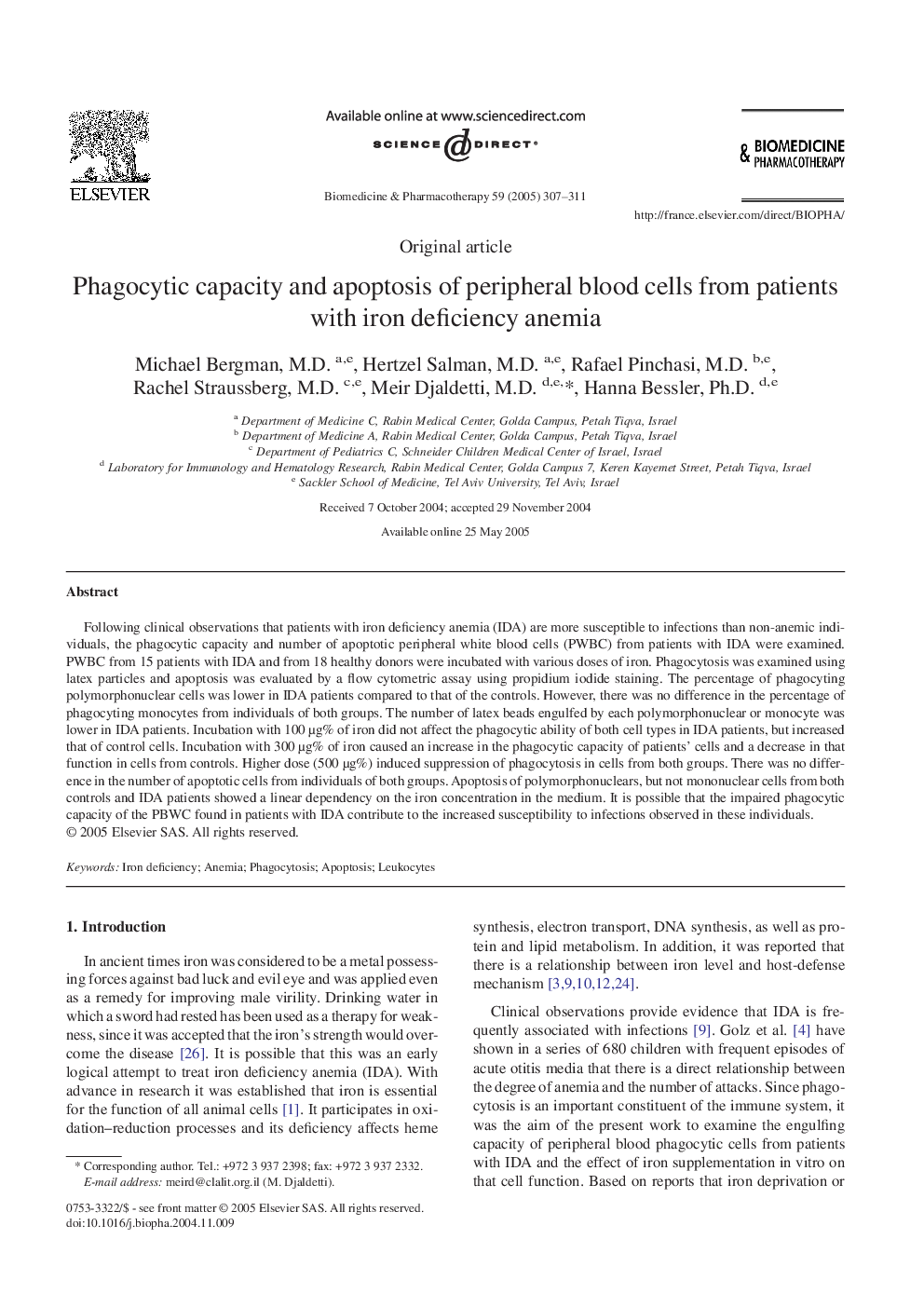| Article ID | Journal | Published Year | Pages | File Type |
|---|---|---|---|---|
| 9004415 | Biomedicine & Pharmacotherapy | 2005 | 5 Pages |
Abstract
Following clinical observations that patients with iron deficiency anemia (IDA) are more susceptible to infections than non-anemic individuals, the phagocytic capacity and number of apoptotic peripheral white blood cells (PWBC) from patients with IDA were examined. PWBC from 15 patients with IDA and from 18 healthy donors were incubated with various doses of iron. Phagocytosis was examined using latex particles and apoptosis was evaluated by a flow cytometric assay using propidium iodide staining. The percentage of phagocyting polymorphonuclear cells was lower in IDA patients compared to that of the controls. However, there was no difference in the percentage of phagocyting monocytes from individuals of both groups. The number of latex beads engulfed by each polymorphonuclear or monocyte was lower in IDA patients. Incubation with 100 μg% of iron did not affect the phagocytic ability of both cell types in IDA patients, but increased that of control cells. Incubation with 300 μg% of iron caused an increase in the phagocytic capacity of patients' cells and a decrease in that function in cells from controls. Higher dose (500 μg%) induced suppression of phagocytosis in cells from both groups. There was no difference in the number of apoptotic cells from individuals of both groups. Apoptosis of polymorphonuclears, but not mononuclear cells from both controls and IDA patients showed a linear dependency on the iron concentration in the medium. It is possible that the impaired phagocytic capacity of the PBWC found in patients with IDA contribute to the increased susceptibility to infections observed in these individuals.
Related Topics
Health Sciences
Medicine and Dentistry
Oncology
Authors
Michael M.D., Hertzel M.D., Rafael M.D., Rachel M.D., Meir M.D., Hanna Ph.D.,
